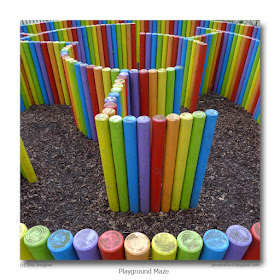
 click photo to enlarge
click photo to enlargeThe windmill at Moulton in Lincolnshire measures 100 feet to the tip of its ogee cap, making it the tallest in Britain. It was built for Robert King in 1822, and remained in constant use as a working mill for over 170 years, until 1995, when its then owner retired. However, for much of that time it had no sails, and thereby hangs an interesting story.
The tower is made of red brick with an outer skin of yellow brick, and has nine wooden floors and a basement. From the time of its construction the mill ground wheat and other cereals for the local farms. On the wooden stairs, walls and machinery inside the mill one can see the pencil calculations of cost, and quantity relating to the grain that went through it at various times. There are also pencil records of when repair and maintenance was carried out, and the signatures of various visitors. In 1894 a fierce storm wrecked a number of Lincolnshire mills. Moulton lost all its four sails, the windshaft and brake wheel. The following year a steam engine was linked to the mill mechanism and stones, and the milling continued under this form of power until it was superseded by a diesel engine. The mill cap was repaced by a utilitarian corrugated metal roof in 1928, and for most of the twentieth century the mill concentrated on producing animal feed.
In 1998 a local group got together with the aim of restoring the mill to its original working condition. With the help of grants from the Heritage Lottery Fund and other sources the mill was refurbished including the addition of a new cap. A cafe, shop and visitor centre was opened in the ancillary building to attract visitors, and tours of the windmill were made available to the public. Grinding re-started using an electric motor. Recently a new external gallery has been fitted where the old one was fixed, and it is about to be completed with cast metal inserts. But, of course, no windmill can be considered complete without a set of sails that drive the machinery. Fundraising continues to achieve the sum - £135,000 - that is necessary to have these made and fitted. Once that happens the mill will be made to work in the way it did back in 1822. The other day I had a tour of this venerable building and found it fascinating. I was also impressed by the dedication and perseverance of the volunteers who are working tirelessly to achieve their goal of a complete restoration of the mill.
More information about Moulton windmill, including visitor details, can be found here.
photograph & text (c) T. Boughen
Camera: Olympus E510
Mode: Aperture Priority
Focal Length: 14mm (28mm/35mm equiv.)
F No: f5.6
Shutter Speed: 1/1000
ISO: 100
Exposure Compensation: -0.7 EV
Image Stabilisation: On



















.jpg)





